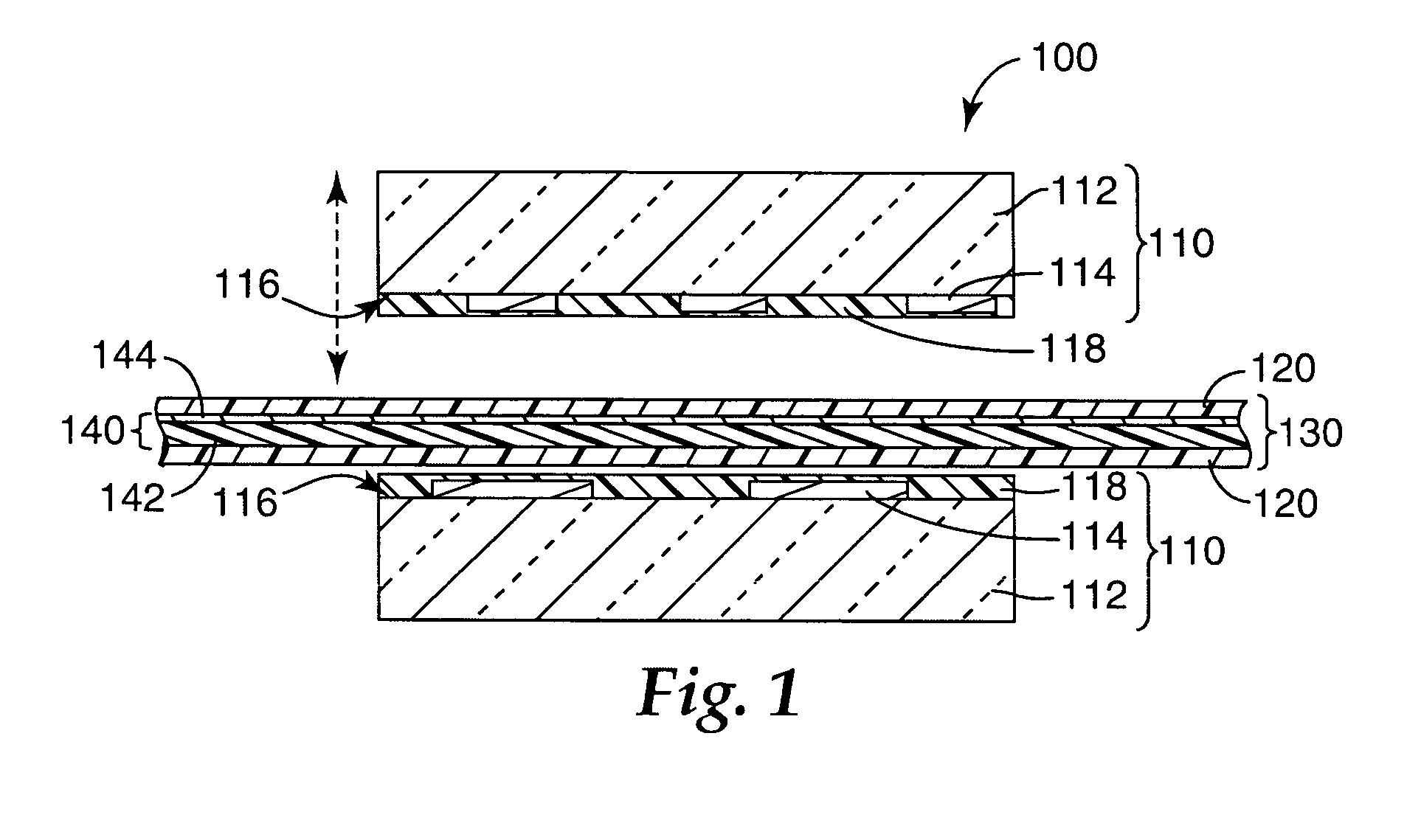Perfluoropolyether amide-linked phosphonates, phosphates, and derivatives thereof
a technology of perfluoropolyether and amide, which is applied in the field of perfluoropolyether amidelinked phosphonates, phosphates, and derivatives thereof, can solve the problems of affecting reducing the yield of products, and routinely experiencing defects in the pattern or the phototool. , to achieve the effect of reducing the adhesion of contaminants to the substrate, minimizing defects in products formed, and increasing the throughput of the lithographic process
- Summary
- Abstract
- Description
- Claims
- Application Information
AI Technical Summary
Benefits of technology
Problems solved by technology
Method used
Image
Examples
second embodiment
Yet another aspect of the invention provides a method of making an article that includes applying a coating composition to a surface of a substrate. In one embodiment, the coating composition includes a compound of Formula I. In a second embodiment, the coating composition includes a first component selected from a hydrofluoroether, fluorinated silane, or combinations thereof and a second component selected from a compound of Formula I, Formula II, or combinations thereof. Compounds of Formula I and Formula II are the same as described above.
In some applications, the compounds of Formula I, Formula II, or combinations thereof can form a self-assembled monolayer on a substrate. For example, compounds of Formula I, Formula II, or combinations thereof can form a self-assembled monolayer on a metal-containing substrate. The metal-containing layer can include metals, metal oxides, or a combination thereof. Exemplary metal-containing substrates can include gold, platinum, chromium, alumi...
example 1
The procedure disclosed in J. Fluorine Chem., 95, 51 (1999), was followed for the preparation of the phosphate compound of the following formula:
The alcohol C3F7O[CF(CF3)CF2O]CF(CF3)CONHC2H4OH was prepared by treatment of C3F7O[CF(CF3)CF2O]nCF(CF3)COOCH3 (prepared by reaction of the corresponding acyl fluoride with excess methanol) with excess 2-aminoethanol. Pyrophosphoric acid (25.5 g, 0.14 mole, Aldrich) was placed in a 250 ml round bottom flask equipped with an overhead stirrer, water condenser, and thermocouple. The acid was heated to 60° C. at which point it was a viscous liquid. To this liquid was added in several two ml portions, C3F7O[CF(CF3)CF2O]nCF(CF3)CONHC2H4OH, (MN=1220, 50 g, 0.041 mole, n is equal to 3 to 10). This addition was slightly exothermic.
After the addition was completed, the reaction mixture was held at 60° C. for two hours, Isopropyl acetate (35 ml) was added and the resulting solution then stirred with 150 ml of 2% aqueous HCl for four hours. The lo...
example 2
To make the compound of the following formula:
diethyl(4-aminobenzyl)phosphonate (10 g, 0.041 mole, Aldrich), triethylamine (4.15 g, 0.041 mole) and methyl t-butyl ether (100 ml) were combined in a 250 ml round bottom flask equipped with an overhead stirrer and water condenser under nitrogen. To this mixture was added, dropwise over about 1.5 hours, C3F7O[CF(CF3)CF2O]nCF(CF3)COF, (MW=1017, 41.8 g, 0.041 mole, prepared by cesium fluoride-initiated oligomerization of hexafluoropropylene oxide in diglyme solvent with distillative removal of low-boiling components, as described in U.S. Pat. No. 3,274,244). Near the end of the addition the solution became nearly homogeneous. After stirring for 16 hours at ambient temperature, the solution was diluted with additional MTBE and washed with about 5% aqueous sodium bicarbonate and then once with 2N HCl. After drying over magnesium sulfate the solvent was removed by rotary evaporation. The amide carbonyl was seen at 1721.5 cm−1 in the infra...
PUM
 Login to View More
Login to View More Abstract
Description
Claims
Application Information
 Login to View More
Login to View More - R&D
- Intellectual Property
- Life Sciences
- Materials
- Tech Scout
- Unparalleled Data Quality
- Higher Quality Content
- 60% Fewer Hallucinations
Browse by: Latest US Patents, China's latest patents, Technical Efficacy Thesaurus, Application Domain, Technology Topic, Popular Technical Reports.
© 2025 PatSnap. All rights reserved.Legal|Privacy policy|Modern Slavery Act Transparency Statement|Sitemap|About US| Contact US: help@patsnap.com



